Modernism at it's finest
One of the best examples of Modernism on Europe
Behind the current image of a dilapidated building, there is hidden the most complete, imaginative and splendid interior of Catalan modernism. Entering the house is like entering a large artificial garden full of flourishes in which the stained glass windows of more than two hundred square meters of surface area stand out between skylights, partitions, doors and windows.
Full of history
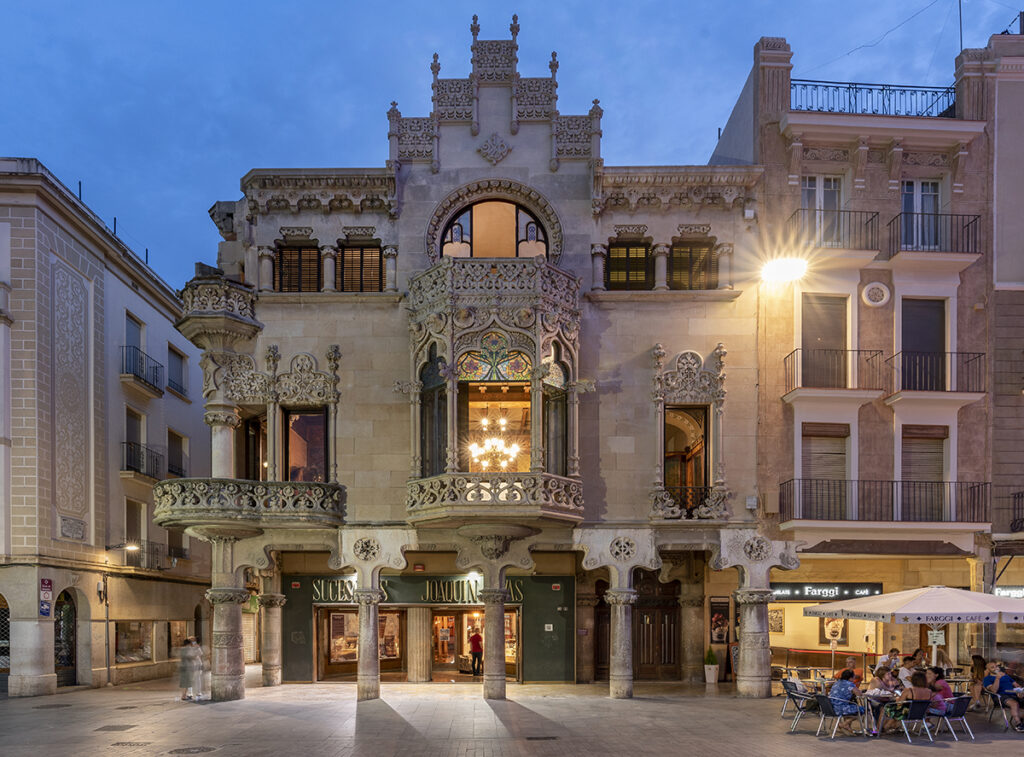
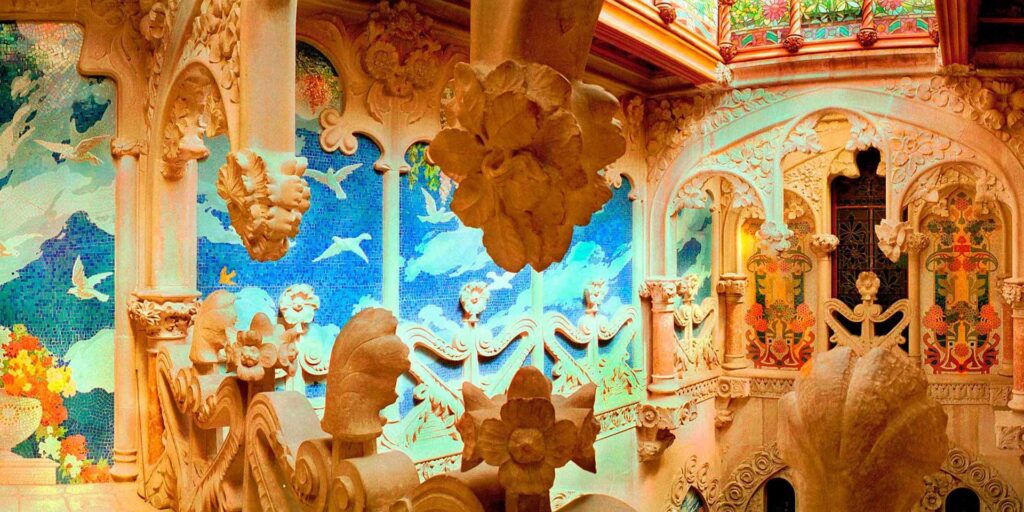
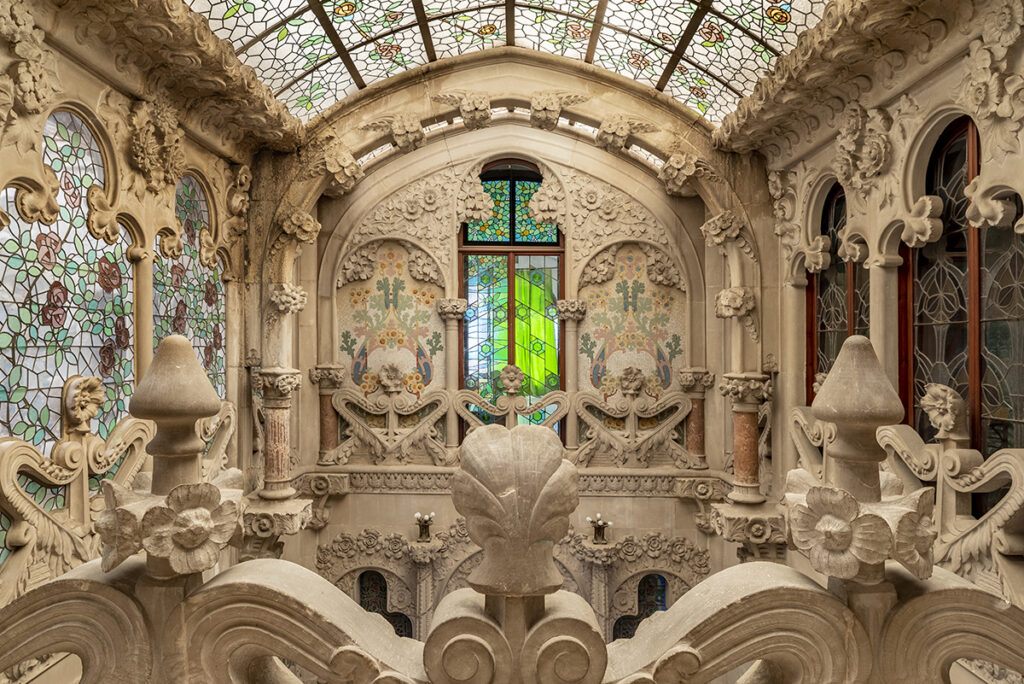
Due to its singularity, Casa Navàs is one of the best examples of Modernism in Europe. Built between 1901 and 1908 by the architect Lluís Domènech i Montaner and the decorator Gaspar Homar, it is the only modernist work in Europe that has survived to the present day as it was first opened.
The building was commissioned by Joaquim Navàs, a rich textile merchant, at a time when Reus was in full effervescence. Navàs and his wife, Pepa Blasco, entrusted Domènech i Montaner with the construction of a house-shop in one of the corners of the Plaza del Mercadal in Reus. The request had an unlimited budget, which is why it became one of the most luxurious works by the architect from Barcelona.
As the second Catalan capital, Reus was one of the most bombed cities in Catalonia during the Spanish Civil War and Casa Navàs also suffered the consequences. Due to one of the bombs, the tower was destroyed in 1938, as well as a large part of the roof and some of the rooms on the second floor. After the war, most of the rooms were restored by the owners themselves but, for budgetary reasons, they had to do without some of the ornamental elements of the façade, such as the frontispiece and the tower. The new ownership of Casa Navàs rebuilt the frontispiece in 2020 and is currently working on the reconstruction of the tower, which will become a reality in 2025.
Inside the house, the façade, however, still has some important mutilations in the upper part such as the great coronation and the tower that gave the building an elegant and slender appearance.
Behind the image of today’s damaged building hides the most complete, fantastic and splendid interior of Catalan modernism. Entering the house is like entering a large artificial stone garden full of flourishes in which the stained glass windows of more than two hundred square metres of surface between skylights, partitions, doors and windows stand out. Ceramics, paintings, silk fabrics, lamps, etc. are also preserved. To do all these works, Domènech i Montaner surrounded himself with the best craftsmen of the time such as Gaspar Homar, Lluís Bru, Antoni Rigalt, Jeroni Granell, Eusevi Arnau, Pujol i Bausis and Hipòlit Montseny.
The house, built at the beginning of 1900, maintains all the rooms and the original furniture, which makes it an obligatory visit for all lovers of modernism, architecture, the history of that period and good taste in general. Surely the visit will not leave you indifferent, we wait for you!
From 1901 till today
Architect Lluís Domènech i Montaner began to design the Casa Navàs. This was a commission from Joaquim Navàs and Pepa Blasco, these textile merchants give the architect a blank cheque so that he had the budget he needed and he was given complete creative freedom.
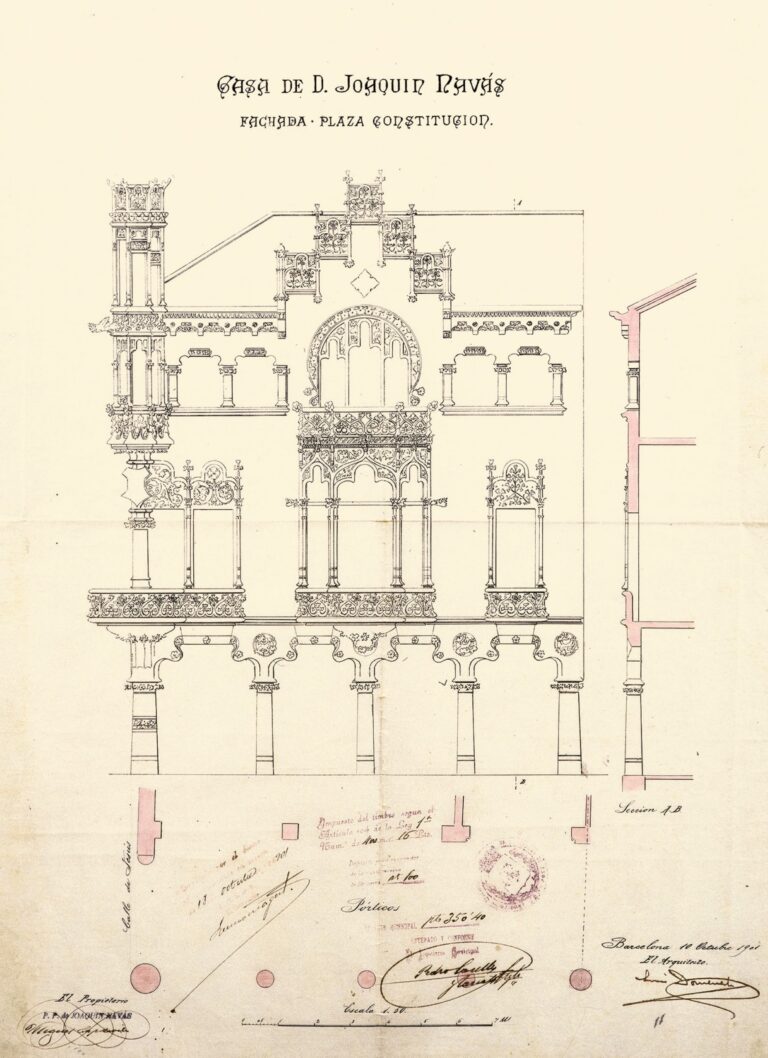
Work begins with the demolition of Casa Simó-Cardenyes, the house where Eduard Toda, the well-known Egyptologist and childhood friend of Joaquim Navàs, was born.
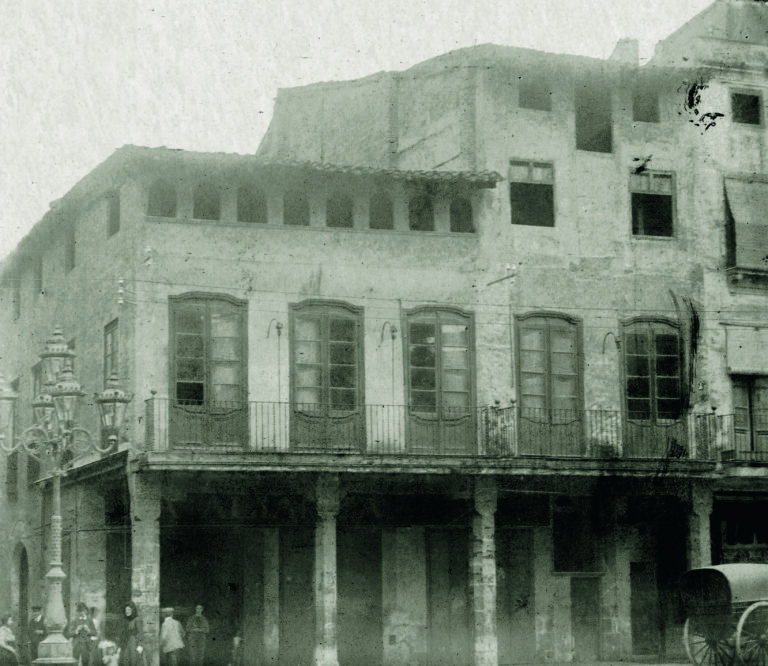
With the building still under construction, the terrace of Jesús Street was closed with a gallery of arches.
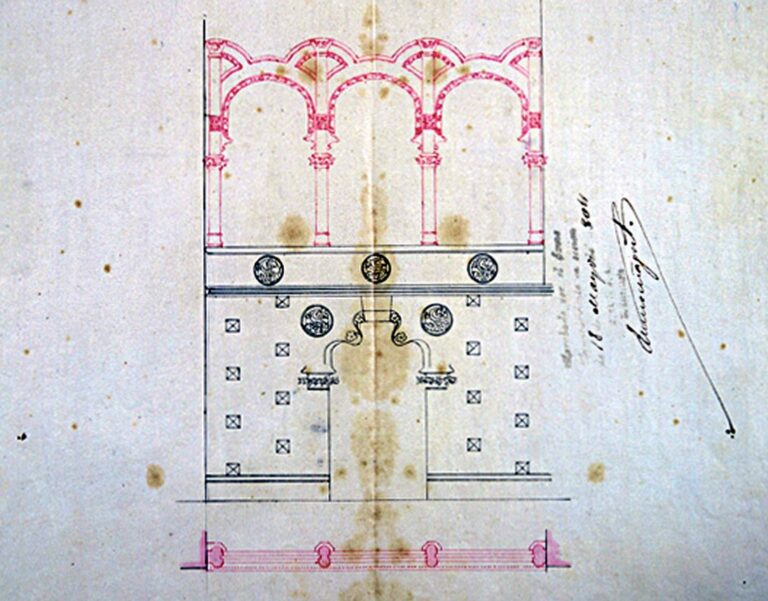
The business was so important for the family that, while the house was still under construction, they opened the shop. It quickly became the most important textile shop in the city and in the south of Catalonia.
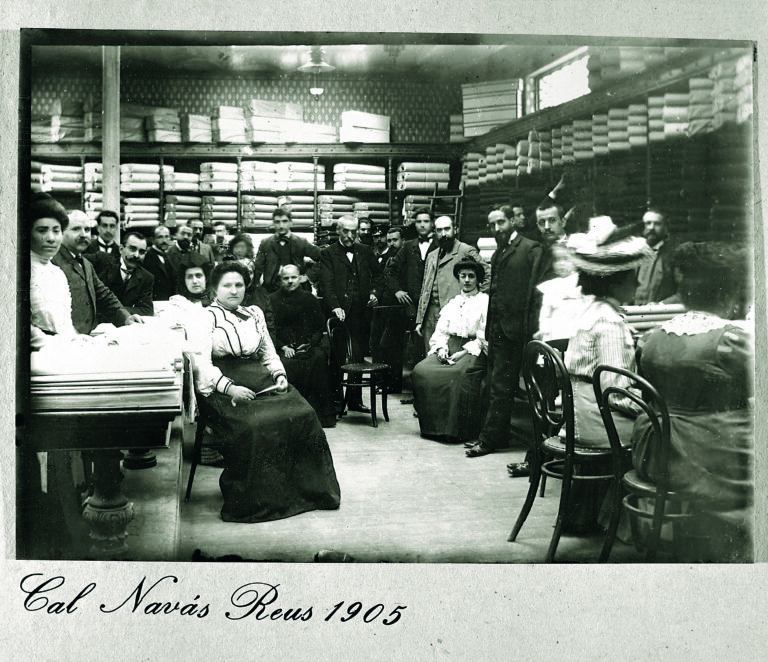
All the comforts of the time were installed in the house, such as a telephone, electric light, and a radiant heating system.
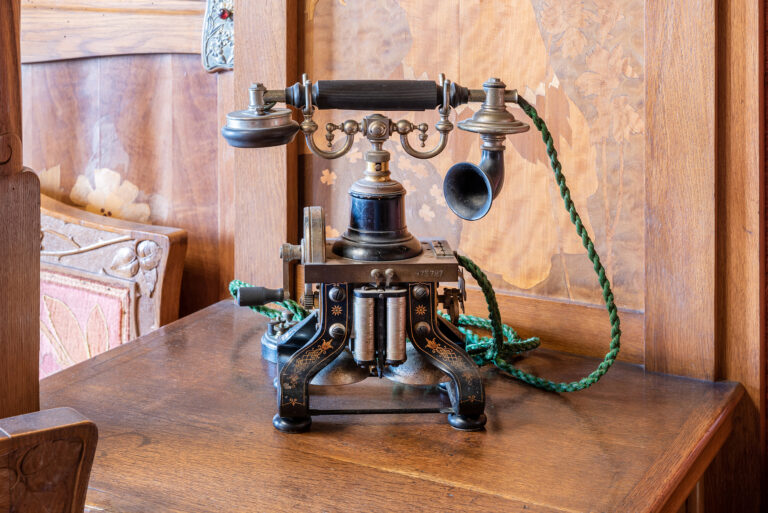
A bomb exploded in the house that Joaquim and Pepa had in the Boca de la Mina. The authorship is unknown. Although there was no human damage to be regretted, the merchant was very frightened and went to Barcelona to live with his wife. They often go down to Reus to supervise the works and visit the family.
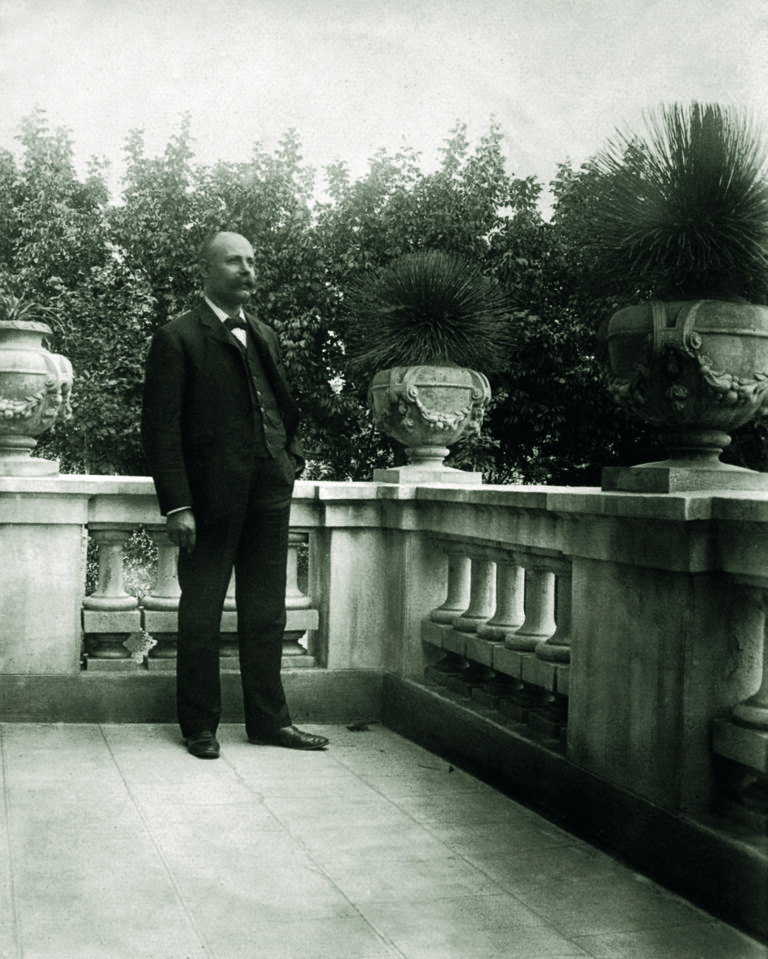
This is the year in which the Casa Navàs was officially finished, although they still worked on it for a few more years.
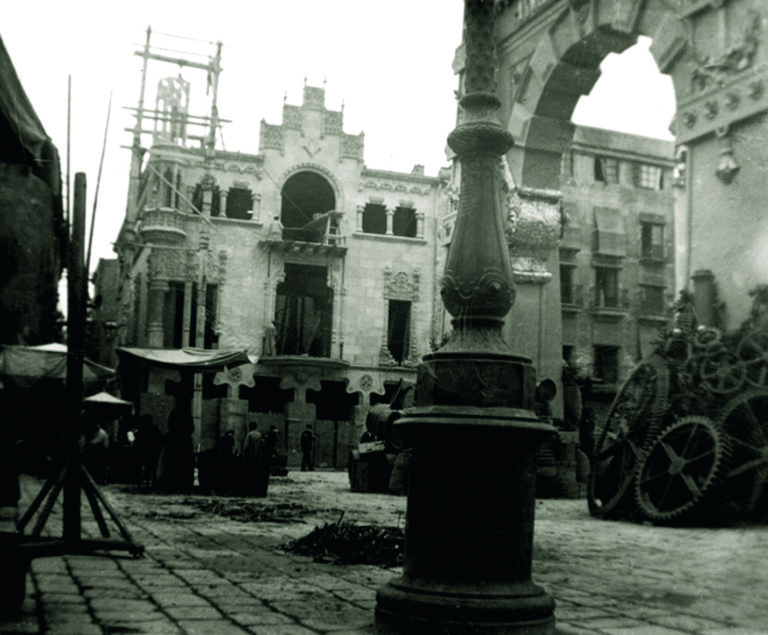
As evidenced by a preserved receipt from the period, this is the year in which the last glass of the house was installed. It is the stained glass window that separates the stairs from the hall.
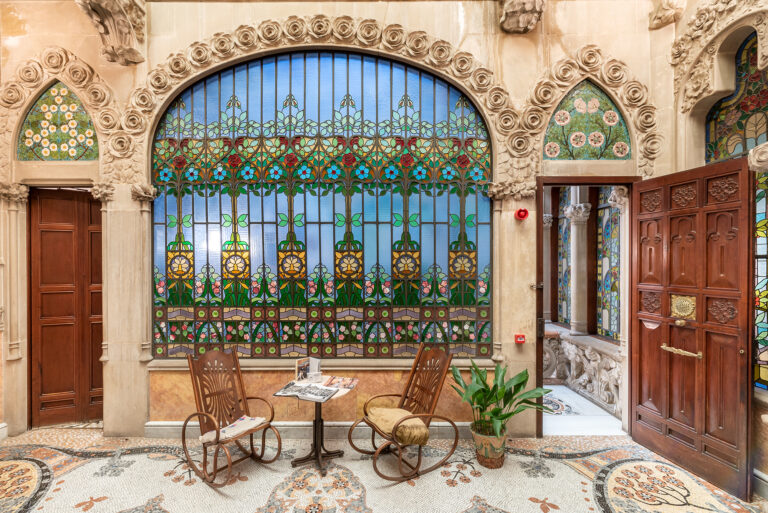
Year of the death of Joaquim Navàs. He was buried with all the honours after a ceremony in the Priory of Sant Pere presided over by the highest authorities of the territory. Pepa Blasco moved definitively to live in Casa Navàs. Mr. Navàs never lived in the house.
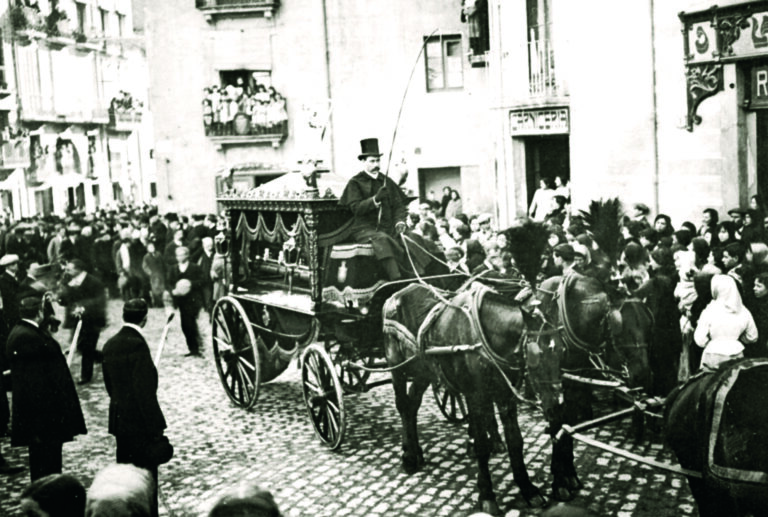
Year of the death of the lady of the house. Joaquim Navàs and Pepa Blasco had no descendants, so they shared the legacy among her nephews and nieces. Her godson, Joaquim Blasco, inherited Casa Navàs. He moved to live in the house with his wife, Maria Font de Rubinat, and their children.
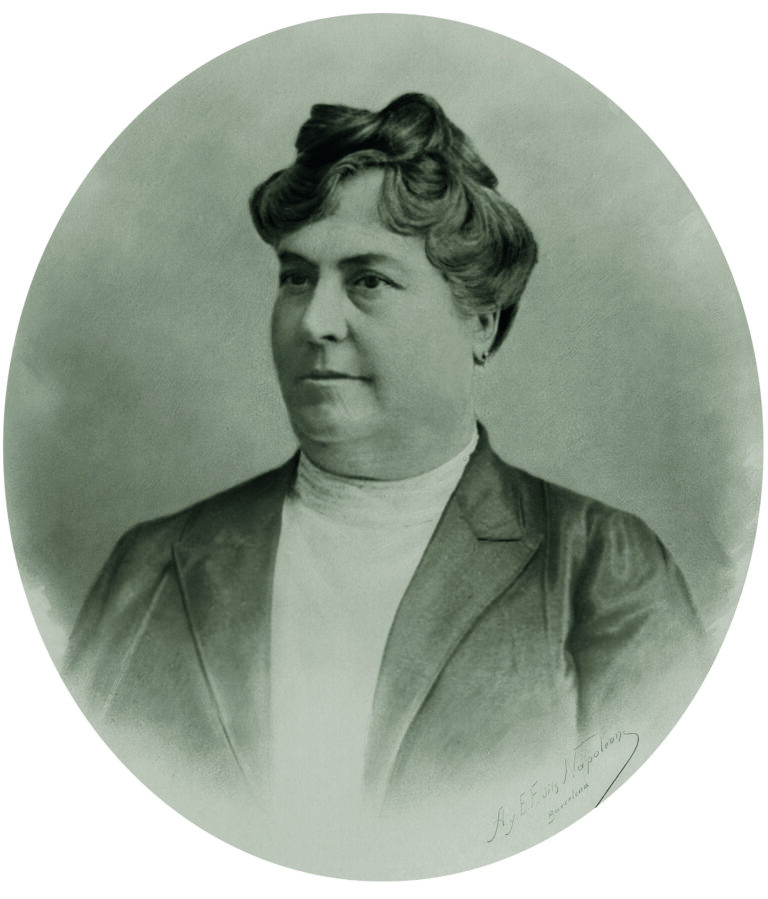
The Blasco-Font de Rubinat couple decided not to leave the Casa Navàs during the Spanish Civil War despite the fact that most of the people from Reus left the centre of the city due to the constant bombardments. One of these bombs hit the house on 24 March 1938, destroying a large part of the second floor, the tower and the head of the building. The family moved to Salou.
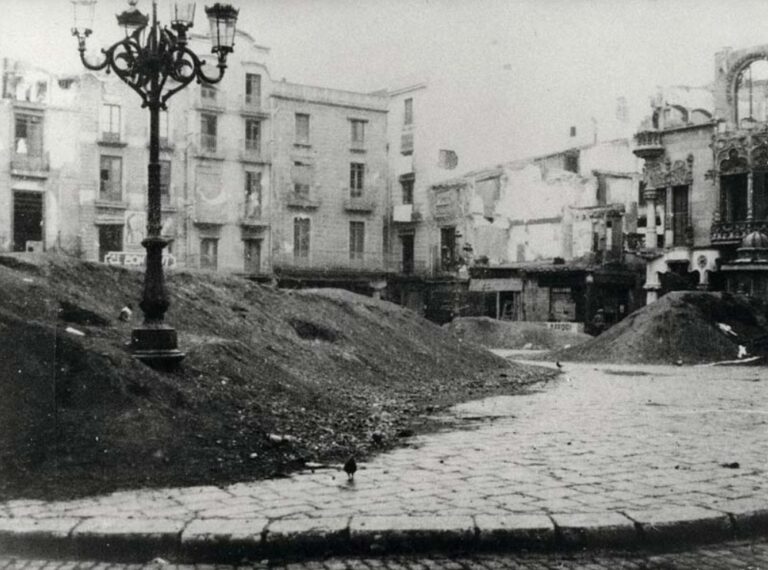
At the end of 1939, Joaquim Blasco was released. For work reasons he moved to Murcia. While the patriarch does not find a place for his family to live, Maria Font de Rubinat continued to live in her father’s house. That year the couple decided to begin the rehabilitation of the Casa Navàs, the priority was to restore the entire structure so that the house became habitable again. The works lasted until 1943.

Doctor Nolla and his wife rented the house. Many people from Reus remember the time when they had the privilege of going to the doctor in the most singular building of the city. The Nolla family were the people who enjoyed the house the longest, as they lived in it for almost 40 years.

The owner of Casa Navàs died in 1976. Joaquim Blasco left the house to his two eldest sons, Joaquim and Jaume Blasco Font de Rubinat.
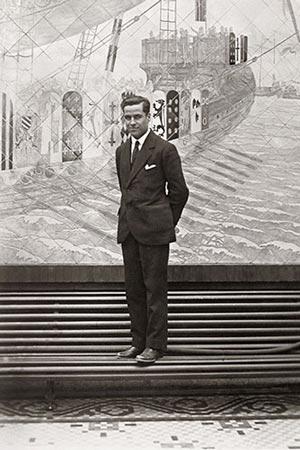
In 1980, Maria Font de Rubinat, already a widow and around eighty, settled in Casa Navàs with her son Joaquim. She lived there until the last of her days, in 1998. Maria and her children protected the house from any renovation and modernisation, and they also invested as much money as they could. Among other things, they bought the buildings next to Casa Navàs to protect it and restored most of the stained glass windows that had been destroyed during the war.
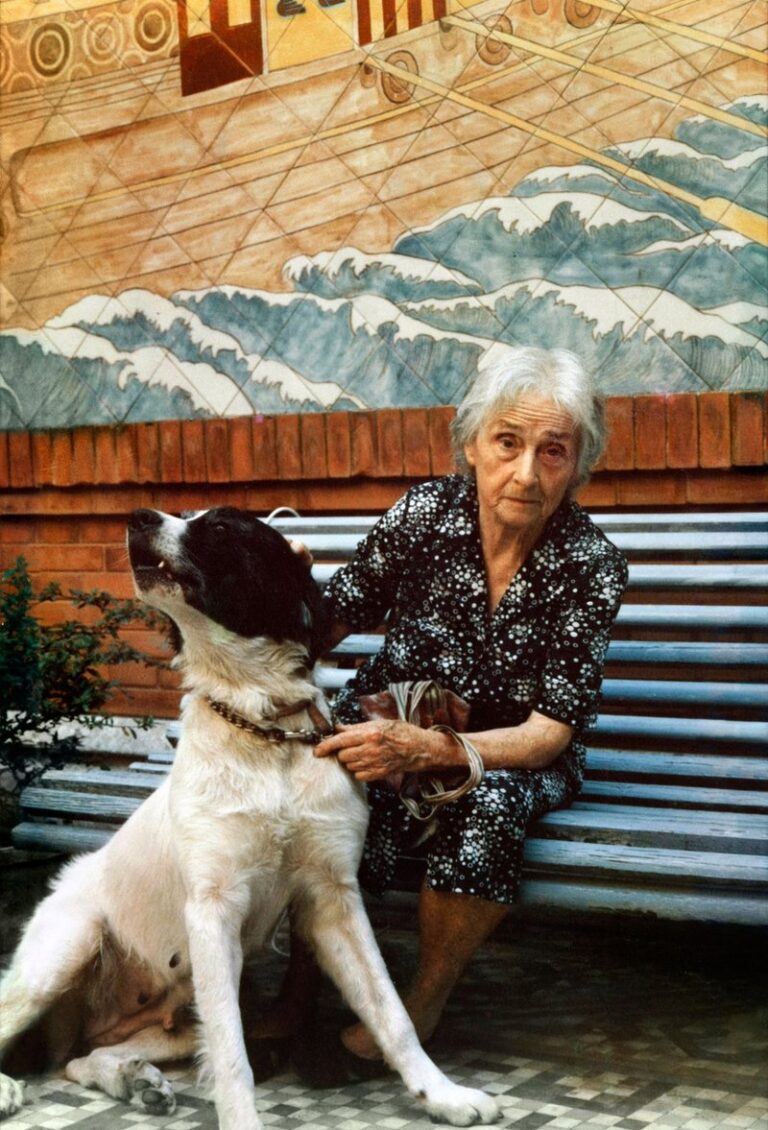
Joaquim Blasco died on 15 June 2009. After his mother died, he continued to spend most of the day at Casa Navàs. With his death, the house passed into the hands of his siblings: Pepa, Màxim and Dolors. They were in charge of restoring the tribune of the façade and the arches of the terrace.

In November 2017, a businessman from Reus decided to buy the house in order to open it to the public, since until now it could only be visited one day a week. A third is still in the hands of one of the heirs of the Blasco-Font de Rubinat family.
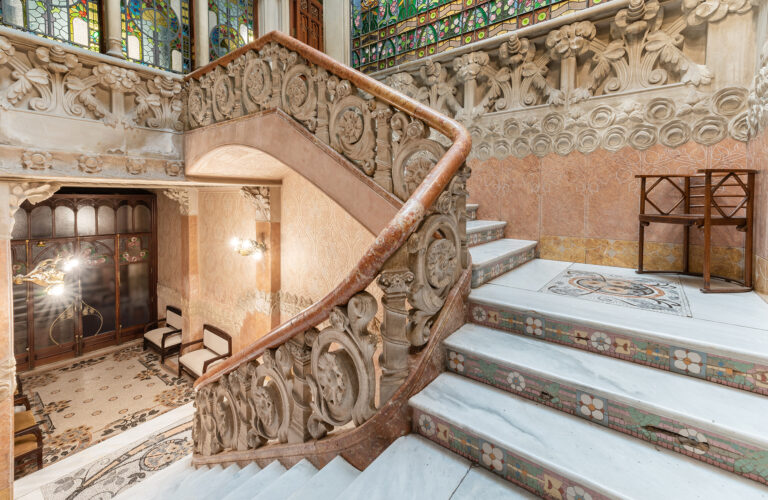
In the summer of 2018 Casa Navàs opened its doors to visitors and thus remained till now, when the house can be visited every day. At the moment, the property is studying what restoration work and ‘museumisation’ must be done in this jewel of European modernism.
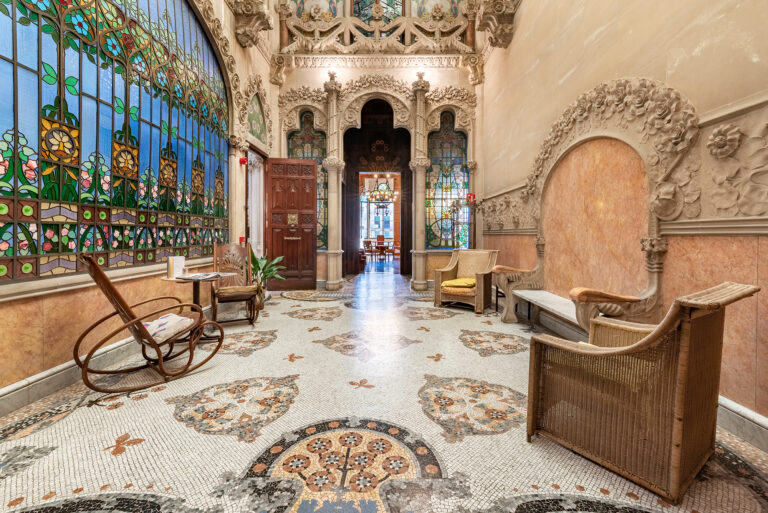
In 2020, the owners of Casa Navàs rebuilt the frontispiece that crowned the main façade of the building, which had been destroyed during the bombing of 1938. This marked the beginning of the recovery of the exterior image of the house. The reconstruction was made in the image and likeness of the original piece, but with small nuances that avoid the historical faux pas.
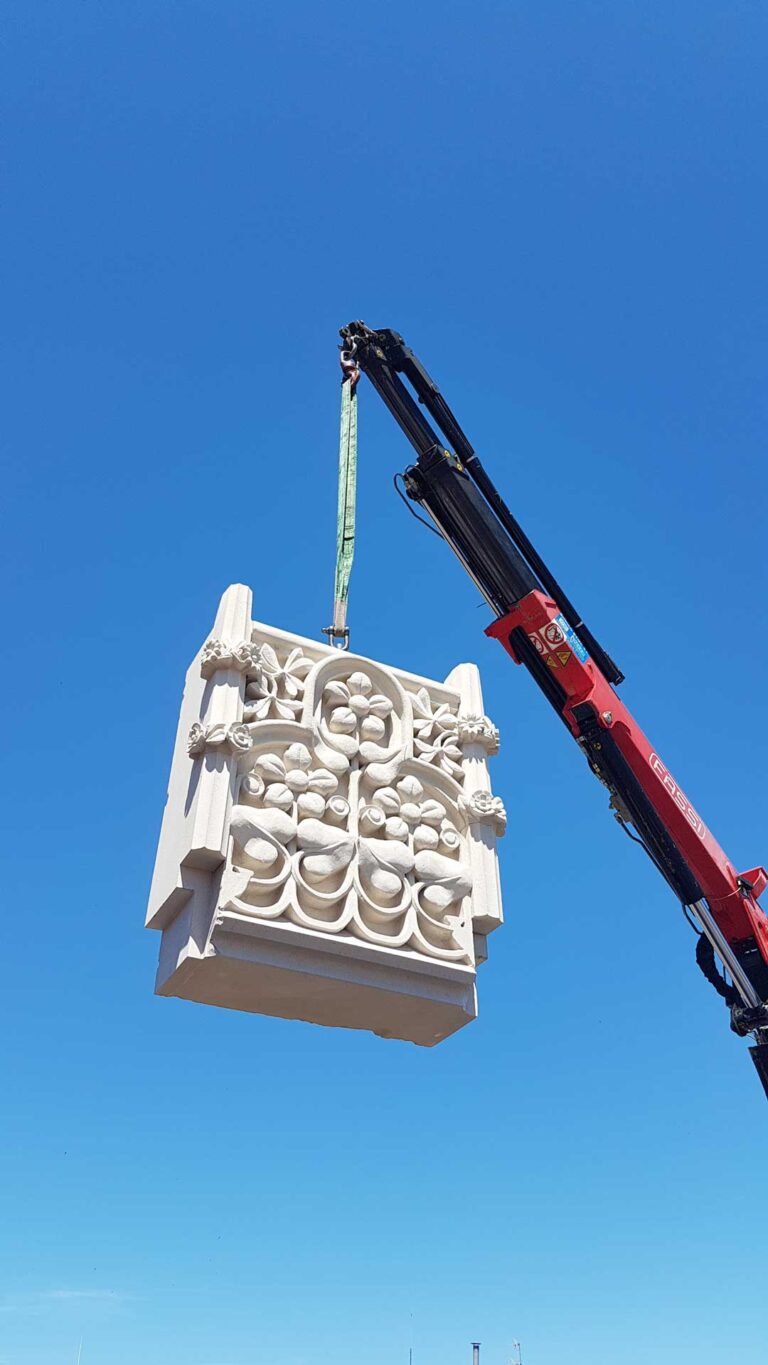
The authorship of the mosaic on the main staircase was unknown for many years. In January 2024, historians Marta Saliné and Jordi March discovered that this piece was the work of Joaquim Mir. The owner of the house contacted the collector of the original painting and acquired it to return it to its place of origin, Casa Navàs. Mir was one of the great painters of the generation of post-modernist painters and is considered the best Catalan landscape painter of his time.
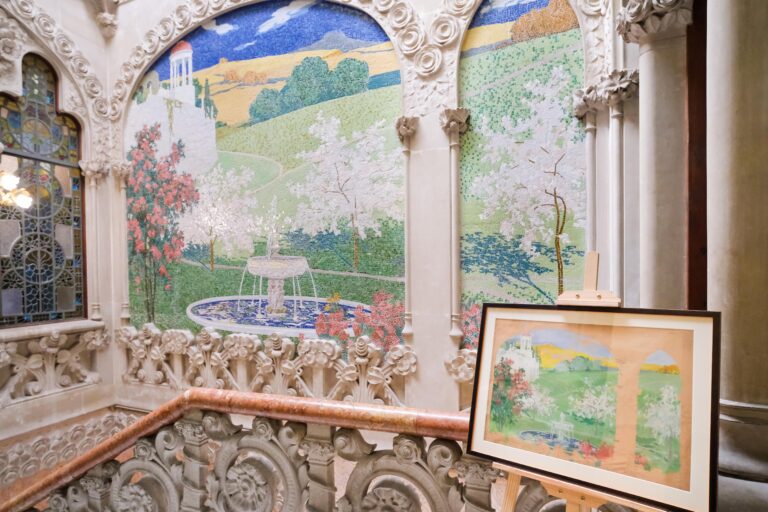
The reconstruction of the tower is one of the most important milestones for Casa Navàs. The owners at the time, after the Spanish Civil War, wanted to rebuild it but were unable to do so for budgetary reasons. It was eighty-seven years after the bombing that this desire materialised and Casa Navàs was restored to the original appearance that Domènech i Montaner had given it. With this action, the original exterior appearance of the house will be completely recovered.
Casa Navàs staff
Casa Navàs has around fifteen workers. Traditionally, the house has always been a women’s house, with Mrs. Pepa and Mrs. Maria at the head. Today it continues to be so, as the management team is made up of women. The team is made up of a very transversal staff, in which we have graduates in Art History, History, Journalism, Tourism, Performing Arts, Dance and Fine Arts. There are also external professionals who take care of all the digital and graphic design work, as well as the restoration and cleaning of the house. In short, a very varied team designed to provide an unbeatable service to all visitors to this unique work by Lluís Domènech i Montaner.




